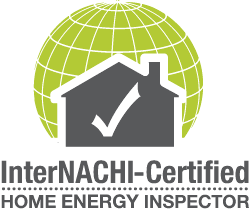The crawl space is the most ignored part of a home. None of the homeowners go to the crawlspace unless they are playing hide and seek with their kids or hiding from a monster. Crawl spaces below floorboards are small, dark, and unvisited. If there is no proper ventilation, these places are perfect for mold growth.
An inspection can help find signs of mold in the crawl space.
Favorite Places for Mold to Grow in a Home
Mold can grow in any place that is moist and lacks proper ventilation. These include:
- Attics
- Crawl Spaces
- Basements
- Air Ducts and Vents
- Bathrooms
- Behind Drywall
Signs of Mold in Crawl Space
The crawl space is a suitable location for mold infestation. There are some signs that can indicate the presence of mold in your crawl space:
1. Musty Odor
The musty or earthy smell is the first sign that indicates water damage and mold growth in a place. If the smell is persistent, it means that the issue is severe. Mold growth should not be ignored in any part of a home.
2. More Allergy Symptoms
Is everyone in your home experiencing persistent allergy symptoms? That might be mold. Unfortunately, it only gets worse from there. If mold isn’t removed entirely on time, it could eventually lead to health issues like:
- Skin Irritation
- Respiratory Problems
- Asthma
3. Increased Pest Infestation
If you have observed more pests in your home, it also indicates that there is a damp place in your home or under the building. More bugs in the home mean there is mold in the house somewhere you can’t immediately spot.
4. Sagging Floor
Humidity in the crawl space damages the floorboards and makes the floor sag. In the presence of moisture, the floor bends due to the weight of furniture. If you feel an uneven floor in your home, you should check the crawl space as soon as possible.
5. Drywall Cracks and Nail Pops
The damage to the foundation of a home can cause drywall cracks. As the mold can cause sagging in the floor, the next indicator of it can be cracks in drywall and nail pops. It indicates that there is high moisture content near the foundation, and it can be problematic.
6. Discoloration on Floor and Walls
There can be visible signs of mold presence. The surface linked to mold infestation gets discolored and fuzzy. The color can differ according to the species of the mold, as each mold has a different color.
7. Decay of Beams and Joists
Moisture and mold growing in the place can damage the structure. It leads to the decay of beams and joists in the crawl space. If any structural component is damaged, you need to check for the presence of mold immediately.
How to Tell if You Have Mold in Your House?
It is not necessary for mold to grow only in the crawl space. It can spread in any unattended area of the home. You can also find mold in some of the more common areas in the house.
Here are the top indicators:
1. Leaks in the Plumbing System
If the plumbing system leaks, it doesn’t allow your home to be fully dry, it can be a suitable place for mold to spread. Mold grows in bathrooms due to leaky faucets.
2. Humid Indoor Environment
If you often feel humidity in your home, it means that your home has high moisture content. It makes the environment suitable for mold to grow. If you can smell a musty or earthy smell, then there is no denying you have a mold problem.
3. Condensation on Windows and Walls
If you notice excessive condensation on your windows and walls, it means the air inside has a high moisture content, leading to frequent droplets on the windows. If such an environment persists, you should go for mold testing, as the place has been favorable for mold.
How to Prevent Mold in the Crawl Space?
Now that you are familiar with the signs of mold in the crawl space, let’s move on to prevention. In order to prevent mold in the crawl space, you need to take the following steps:
1. Improve Ventilation
The crawl spaces with better ventilation are less likely to have mold. The airflow doesn’t let the area stay humid for a longer period.
2. Fix the Drainage Issues
If there are any drainage problems that are causing pooling of water near the crawl space, they need to be addressed as soon as possible.
3. Regular Inspections
Check the crawl space regularly. If you find any signs of water damage or mold, get the crawl spaces inspected. The inspector can tell you about the source of moisture and help you get rid of the mold.
4. Professional Mold Removal
If mold is found in the crawl space, you should get help from professionals to get rid of it. Dealing with the mold on your own can be harmful. Some of the spores may remain on the surface and can regrow.
Conclusion
If you have found any signs of mold in your crawl space, you should book an inspection for mold testing. The crawl space has structural components, and mold can hide in them. A prolonged infestation of mold in the crawlspace can cause serious damage to the structural components, i.e., beams, joists, etc. It is crucial to keep your home mold-free for a healthier and better living experience.
Get your mold inspection now from Blessed Assurance Home Inspection, and our professionals will help you get ahead of the problem!









